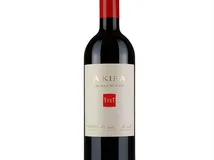Nuits Saint Georges 2020 (750ml)
A magnificent estate, solid know-how, and meticulous care for each of their wines clearly distinguishes Maurice Gavignet from other wineries. Maurice Gavignet Nuits Saint Georges is a bottle of intense crepuscular crimson with a hint of mauve.
The nose often features rose and liquorice. The young red wine has aromas of cherry, strawberry, and blackcurrant, and when matured, leather, truffle, fur, game. Notes of macerated fruits (prune) complete the picture. Muscular and vigorous, chewy and full-bodied, its structure is both well-built and well-balanced, and it is long in the mouth. The medium-bodied palate is structured with silky tannins and bright acidity. Light, elegant, and oh so smooth.
It is most fully enjoyed after several years’ laying down which rounds it out and underlines its sensuality and breeding.
Harvested by hand and then transported to their vast vaults, Rue Félix Tisserand in Nuits-Saint-Georges, where the wine is vinified and aged. Fermented at controlled temperatures and then aged in French Merrain oak barrels for 18 months. Further ageing occurs after bottling in order to let the wine develop powerful red fruit and blackberry aromas.
The appellation falls into two parts, divided by the town itself. The northern portion extends as far as the border of Vosne-Romanée, and the southern section lies partly in Nuits-Saint-Georges and partly in Premeaux.
The soils in the northern sector derive from pebbly alluvium washed down from upslope, or, in the low-lying parts, silty deposits from the river Meuzin.
In the southern sector, the alluvia at the base of the slope originate in the combe of Vallerots where there are deep marly-limestone soils, while at the top of the slope, the rock is almost at the surface. Exposures are mostly to the East or South-East.





_180.png)





















































































































































































 WhatsApp us
WhatsApp us